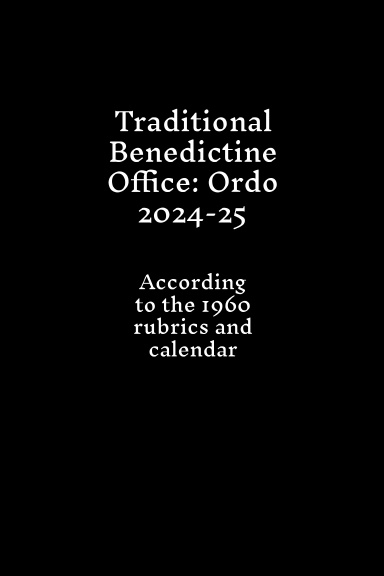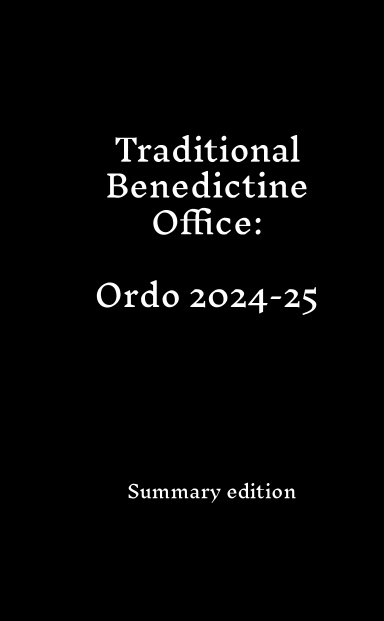 |
| Source: Gregobase/Dominique Crochu |
In my post on the feast of the Conversion of St Paul a few days ago I flagged that I planned to provide a series of posts on the history of the Matins responsories, focusing the Epiphanytide set in particular, so herewith the next in that series.
It is worth first, though, making some observations around the set of responsories as they appear in the post-Trent books and their earlier history, by way of a cautionary note on the value of the current make up of the set as claimed witness to the structure of the Roman Office.
The evolution of the set
Although it is sometimes implied or claimed outright that this set was transmitted unchanged from late antiquity, there is no direct evidence for this, and the most detailed study of the set from a liturgical perspective, by Dom Le Roux, actually posits several stages in the evolution of the set.
That is understandable since the earliest actual witness to their use in the period after Epiphany dates, as far as I am aware, from the ninth century (in the introduction to the otherwise lost antiphoner of Amalarius).
And even then Amalarius actually only names the first of them, in a comment that the set starts with Psalm 6, Domine ne in ira tua.
Indeed, while Dom Le Roux pointed to the eighth century as a key date for the evolution of the set, it also continued to evolve throughout the middle ages and after, as the number of responsories used on Sundays in the Roman Office has gradually decreased, and local variants excluded from the set.
In particular, the number of variable responsories in the Roman Office on Sundays has progressively decreased. In the tenth century one responsory was dropped in favour of the insertion of the Te Deum (hymns were not previously part of the Roman Office); another was displaced in the twelfth century, when Pope Innocent III prescribed that the responsory Duo Seraphim be used as the last responsory throughout the year. And in a complete wreckovation of the Roman Office, in 1960, the number was decreased to a mere two (the Benedictine Office, by contrast, even in its 1960 version, has twelve responsories, though it too, has adopted the practice of using Duo Seraphim as the last responsory on most Sundays of the year).
The manuscript evidence suggests, moreover, that different places made different selections as to which responsories to drop, and/or included one or more 'non-core' (but still possibly ancient) responsories, most of which presumably dropped out of use post-Trent.
The net result is that although the responsories in the post-Trent books are mostly (with a few notable exceptions) selected from the most common responsories that appear in the manuscripts, few if any manuscripts reproduce the current standard set for Sundays without variations.
Moreover, both the Benedictine and Roman post-Trent sets omit some of the most common responsories that appear in both monastic and secular cursus manuscripts alike at the same frequency of those that have been included, most notably Audiam Domine vocem laudis (Psalm 25), and, in the case of the Roman, Afflicti pro peccatis nostris (a non-Scripturally based responsory).
Roman or non-Roman origins?
Secondly, while the liturgists generally assumed that responsories in general - and this set in particular - originated in Rome, musicologists seems generally rather less convinced of this, not least because the earliest reference to responsories actually appears in a source from Gaul, not Rome.
And in the case of the de psalmiis responsories, several have survived in versions based on psalters other than the Romanum.
I drew attention, in my previous post, to Peccata mea Domine, which uses the Vetus version.
Another example is Diligam te Domine (said in the second Nocturn on Sundays), based on Psalm 17, and which is preserved in considerable numbers in both Romanum and Gallican text versions.
Le Roux's study also noted that a number of the so-called 'core set' do not actually appear in the earliest Italian antiphoners, presenting another problem for the claims about their witness to the early Roman Office.
Responds and their verses
The main reason these responsories have captured the liturgist's attention is that they are generally said in the numerical order of the psalms in the 'respond' part of the text. But while the verses of the responsory most commonly associated with them (and used in the post-Trent books) are mostly taken from the same psalm as the responds, that is not always the case.
Consider, for example, the first of the set, Domine ne in ira tua - the verse is actually from Psalm 54:6:
R. Dómine, / ne in ira tua árguas me, neque in furóre tuo corrípias me: * Miserére mei, Dómine, quóniam infírmus sum. V. Timor et tremor venérunt super me, et contexérunt me ténebræ. R. Miserére mei, Dómine, quóniam infírmus sum. | R. O Lord, rebuke me not in your indignation, nor chastise me in your wrath. * Have mercy upon me, O Lord, for I am weak. V. Fearfulness and trembling are come upon me, and darkness has overwhelmed me. R. Have mercy upon me, O Lord, for I am weak. |
In keeping with the penitential flavour of the set, these 'non-matching' verses include verses from two of the penitential psalms not otherwise covered in the set, namely Ps 129 and 142.
Non-psalm based responsories
It is worth noting, too that Afflicti pro peccatis (the second responsory in the Third Nocturn on Sundays in the Monastic Office), one of the three responsries mentioned in Mr diPippo's recent NLM post, is unusual in that its text is not Scriptural at all:
R. Afflícti / pro peccátis nostris, quotídie cum lácrimis, expectémus finem nostrum; † dolor cordis nostri ascéndat ad te, Dómine, * Ut éruas nos a malis, quae innovántur in nobis. V. Dómine, Deus Israel, exáudi preces nostras, † áuribus pércipe dolórem cordis nostri. R. Ut éruas nos a malis, quae innovántur in nobis. | R. You have afflicted us for our sins, every day we expect our end with tears; let the sorrows of our heart come before you O Lord. * That you may deliver us from the evils that have come upon us V. O Lord God of Israel, hear our prayers, hearken unto the sorrows of our heart. R. That you may deliver us from the ills that are come upon us. |
But it is not the only not the only non-psalm based responsory used in this set.
Consider, for example, Ne perdideris (sung on Wednesday in both the Roman and Benedictine Offices), and whose respond text comes from the apocryphal text the 'Song of Manasses', with a verse from Psalm 142:
R. Ne perdíderis / me cum iniquitátibus meis: * Neque in finem irátus resérves mala mea. V. Non intres in iudícium cum servo tuo, Dómine. R. Neque in finem irátus resérves mala mea. | R. Do not destroy me with my sins. * Do not be angry with me forever, or store up evil for me. V. Enter not into judgment with your servant, O Lord. R. Do not be angry with me forever, or store up evil for me. |
Omnípotens sempitérne Deus, infirmitatem nostram propítius réspice: atque, ad protegéndum nos, déxteram tuæ maiestátis exténde (Almighty and everlasting God, look with favor upon our weakness, and stretch forth the right hand of Your majesty to help and defend us).
Domine deus propitius esto populo tuo et converte tribulationem nostram in gaudium, or O Lord God hear the supplications of your people and turn our mourning into joy.
You can find a transcription of the chant with the full text on the fabulous Gregofacsimil website, or on Gregobase.
And you can find the next part of this series here.





